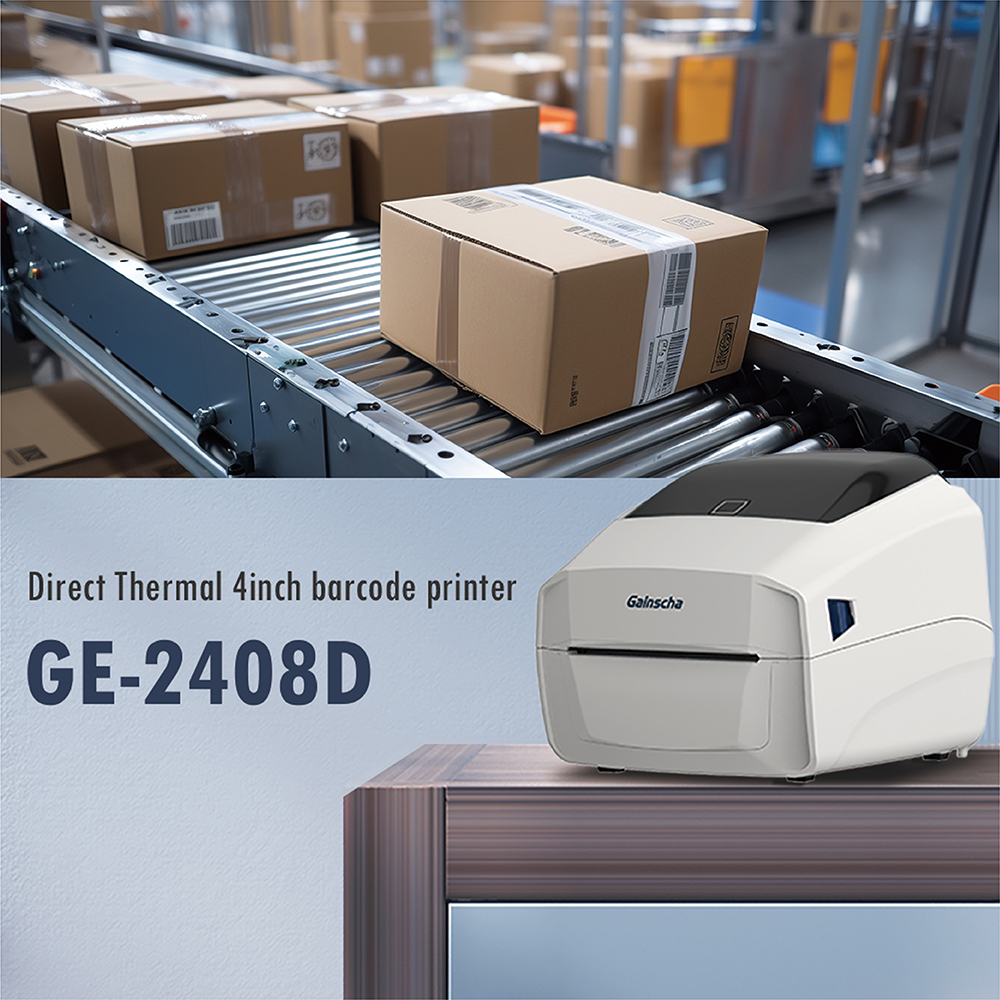The principle of a thermal printer is to cover a light-coloured material with a transparent film and then heat the film for a while to turn it into a darker colour (usually black, but also blue). The film is formed by heating, causing a chemical reaction in the film. This chemical reaction takes place at a certain temperature high temperature accelerates this chemical reaction. When the temperature is below 60°C, it takes a long time for the film to darken, when the temperature is 200°C, this reaction is completed within a few microseconds. A thermal printer selectively heats specific areas on thermal paper, thereby producing corresponding graphics. The print head is heated by a small electronic heater in contact with the heat-sensitive material. The heaters are arranged in the form of square dots or strips and are logically controlled by the printer when operated, creating a pattern corresponding to the heating element on the thermal paper. The same logic circuit that controls the heating element also controls the paper feed, allowing graphics to be printed across the label or paper.
Direct heat Mini printing
In direct thermal printing, a thermal print head is used to push heat-sensitive material through the printer. As a result of the heat's reaction, it turns black and gives rise to the image. Because it doesn't use ink, toner, or ribbons, direct thermal printing drastically cuts printing expenses. Direct thermal printers are incredibly user-friendly due to their straightforward designs and low maintenance needs.
Working principle
To create an image or text using heat-sensitivity printing, the printer applies heat and pressure to a substance that has been chemically treated. This causes the material to undergo a chemical reaction. A major downside is the significantly reduced printer service life caused by the constant direct contact between the label paper and the printer throughout the printing process. In most cases, it covers 25%-50% of the printer's lifetime.
Media requirements
The only materials that can be printed using direct heat-sensitive printing are heat-sensitive papers and covering membranes. Both the medium's surface coating and the quality of direct thermal printing are distinct. But this thermal paper has a chemical ingredient that turns black when heated and fades quickly when exposed to UV light. As a result, thermal labels have stringent storage requirements and a shorter shelf life than printed labels. Meanwhile, heat-sensitive printing is perfect for cost control, requires little maintenance, and is easy to operate.
Main benefits of Direct Thermal Printers
Prints made using direct thermal printing are sharp and easily scanned.
Perfect for use when the label picture doesn't have to endure long because the product itself has a short shelf life. For example, product labels are not suitable for use as shipping labels or receipts.
Because they don't require any materials (ink, toner, ribbon), direct thermal printers are easy to use
Minimum maintenance expenses.
When compared to dot matrix or laser printers, direct thermal printers are more long-lasting, giving you dependable performance in industrial applications.
Real-World Uses for Direct Thermal Printers
Thermal printing has a short lifespan and poor resistance performance, but it's easy to use and requires little in the way of materials, making it a good fit for label applications like retail stores, cafes, supermarkets, and others where cost is more important than longevity.
Thermal Transfer Printing
Working principle
To do thermal conversion printing, a certain carbon belt is required. To print text, symbols, graphics, etc., the printer is heated so that the carbon belt transfers to the printing medium. By preventing the printer from coming into direct touch with the label paper, the rear surface of the professional thermal transplant carbon belt allows the printer to last longer between cleanings and replacements, thus reducing the overall cost of printer maintenance.
An option for printing that is both professional and accurate is thermocopying and printing. The carbon belt is available in a wide variety of constituent ratios, allowing users to choose one that works best with their specific professional printer and label material requirements. This makes it ideal for a wide range of customized applications.
Media requirements
Thermal transplant printing is highly adaptable in terms of the media it can be used on. Some examples of these media include paper goods (such as kraft, gloss, or copper paper), synthetic materials (which are known for their durability), textiles (which are primarily used for garments), and film (for soft packaging).
The main benefits of Thermal Transfer Printers
The text, graphics, and barcodes printed by thermal transfer printers are of excellent quality and seem clear and sharp.
Using thermal transfer, you can print labels one at a time or in mass.
When contrasted with dot matrix and laser printing, the long-term maintenance expenses are less.
The range of media material that thermal transfer printers are capable of printing on is practically endless.
Real-World Uses for Thermal Transfer Printers
Sticker, label, and barcode printing are common uses for it. Thermal transplanting is currently utilized extensively in many different industries, including food packaging, medical equipment labelling, barcode printing, apparel composition labels, shelf labels, tracking packages, expiration dates, and horticulture field identification labels.
In summary
Businesses across all types and sizes can benefit greatly from thermal printing technology. Because of its adaptability and user-friendliness, it is an excellent option for printing out receipts, labels, or any other type of document rapidly. To help you determine if thermal printing technology is suitable for your requirements, we have given you a thorough introduction to the subject in this guide. Whether you are a complete thermal printing beginner or an experienced user seeking an upgrade.









